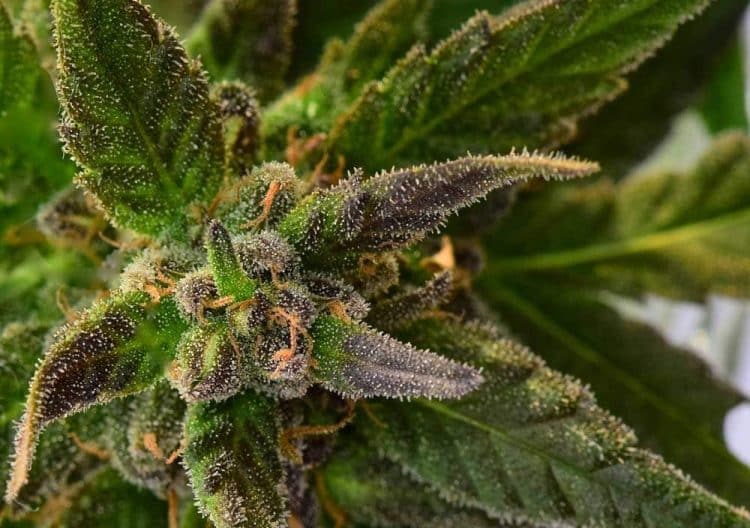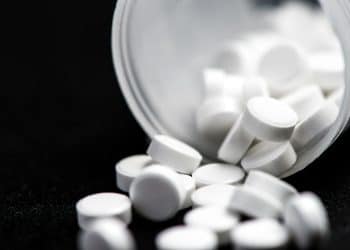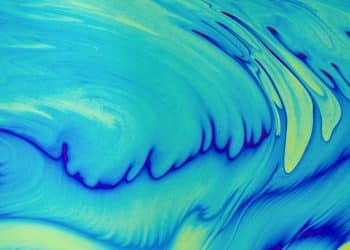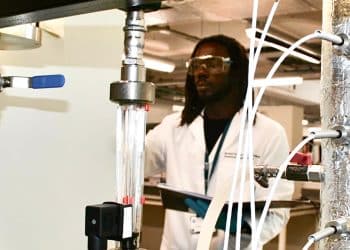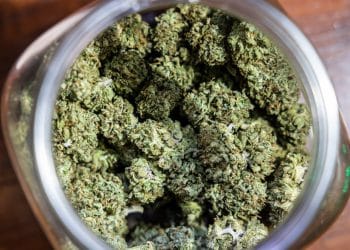The acidic cannabinoids don’t seem to get a whole lot of love. People burn and degrade them, decarboxylate them, desire something other than them, calling them inactive. They don’t have the fame of their neutral progeny. Common ingestion methods, like smoking and vaping, further prod and damage acidic cannabinoids, like it or not. Extraction techniques follow suit.
But these molecules, such as cannabidiolic acid (CBDA), aren’t worthless at all. Rather, much like most other molecules maintained within trichomes, acidic cannabinoids are medicinal. While cannabidiol (CBD) has reigned across Earth, it isn’t abundant in Cannabis sativa. CBDA, however, is the dominant cannabinoid in traditional hemp plants and can be elevated in traditional cannabis plants as well. One small win, but there’s more to CBDA than just a temporary position of power.
CBDA has been shown to inhibit the migration of human breast cancer cells through its down-regulation of cyclooxygenase-2 (COX-2), an enzyme that’s been measured in approximately 40% of human breast cancers. [1] Migration of cancerous cells involves movement away from the primary tumor site to infect other secondary regions in the body. This process, called metastasis, defines the leading cause of death due to cancer. [2] CBDA, in addition to CBD and delta-9-tetrahydrocannabinol (THC), also helped control vomiting in a type of shrew, research which demonstrates further utility to sufferers of cancer. [3] When compared with a common anti-emetic chemotherapy drug, lower absolute doses of CBDA reduced conditional gaping in rats, a reaction based in nausea. [4] What’s more, very low doses of CBDA enhanced the efficacy of the drug alone when used in tandem. [4]
Raphael Mechoulam, Roger Pertwee, and colleagues have evaluated modifications to CBDA to increase stability, since, as one paper states, “its low stability impedes its development as a medicine.” [5] One such molecule called CBDA methyl ester revealed decreased sensitivity to pain in male rats. [6] Called HU-580 (HU=Hebrew University), this synthetic cannabinoid has been studied for sleep, where researchers highlighted wake-promoting properties. [7] It should be noted that unmodified CBDA also has pain relief and anti-inflammatory properties, as demonstrated in rats. [8]
CBDA has anticonvulsant properties as shown in a mouse model of Dravet Syndrome. [9] You may recall that the US Food & Drug Administration approved Epidiolex®, the CBD drug developed by GW Pharmaceuticals for treating rare childhood-onset epilepsies like Dravet and Lennox-Gastaut syndromes. GW Pharmaceuticals has also patented CBDA for use in autism spectrum disorder (ASD), as well as ASD-associated disorders, like Fragile X syndrome, Rett syndrome, and Angelman syndrome.
So, CBDA isn’t worthless. Quite the opposite, in fact. The trick is to be able to protect it from decarboxylation. Some have sought the lab-based, synthetic route; others likely are turning to hemp crude oil products versus further refinement via winterization and distillation. These medicinal attributes of CBDA highlight why cannabis isn’t defined by THC, nor hemp by CBD.
References
- Takeda, S. et al. “Cannabidiolic Acid-Mediated Selective Down-Regulation of c-fos in Highly Aggressive Breast Cancer MDA-MB-231 Cells: Possible Involvement of Its Down-Regulation in the Abrogation of Aggressiveness.” Journal of Natural Medicines, vol. 71, no. 1, 2017, pp 286–291. [journal impact factor = 1.966; cited by 7 (ResearchGate)]
- Clark, A. and Vignjevic, D. “Modes of Cancer Cell Invasion and the Role of the Microenvironment.” Current Opinion in Cell Biology, vol. 36, 2015, pp. 13-22. [journal impact factor = 8.233; cited by 272 (ResearchGate)]
- Rock, E. and Parker, L. “Synergy Between Cannabidiol, Cannabidiolic Acid, and Δ⁹-Tetrahydrocannabinol in the Regulation of Emesis in the Suncus murinus (House Musk Shrew).” Behavioral Neuroscience, vol. 129, no. 3, 2015, pp. 368–370. [journal impact factor = 2.507; cited by 7 (ResearchGate)]
- Rock, E. and Parker, L. “Effect of Low Doses of Cannabidiolic Acid and Ondansetron on LiCl-Induced Conditioned Gaping (A Model of Nausea-Induced Behavior in Rats.” British Journal of Pharmacology, vol. 169, no. 16, 2013, pp. 685-692. [journal impact factor = 6.810; cited by 24 (ResearchGate)]
- Alcina, A. et al. (2019). “A Synthetic Analogue of Cannabidiolic Acid that Acts Like a Positive Allosteric Modulator at 5-HT1A Receptors.” British Journal of Pharmacology, vol. 176, no. 16, 2019, pp. 3011-3012. [journal impact factor = 6.810]
- Zhu, Y. et al. “An Evaluation of the Anti-Hyperalgesic Effects of Cannabidiolic Acid‐Methyl Ester (CBDA‐ME) in a Preclinical Model of Peripheral Neuropathic Pain.” Br J Pharmacol, 2020, ahead of print. [journal impact factor = 6.810]
- Murillo-Rodríguez, E. et al. “Sleep and Neurochemical Modulation by Cannabidiolic Acid Methyl Ester in Rats.” Brain Research Bulletin, vol. 155, 2020, pp. 166–173. [journal impact factor = 3.440]
- Rock, E., et al. “Effect of Cannabidiolic Acid and Δ9-Tetrahydrocannabinol on Carrageenan-Induced Hyperalgesia and Edema in a Rodent Model of Inflammatory Pain.” Psychopharmacology, vol. 235, 2018, pp. 3259–3271. [journal impact factor = 3.875; cited by 8 (ResearchGate)]
- Anderson, L. et al. “Pharmacokinetics of Phytocannabinoid Acids and Anticonvulsant Effect of Cannabidiolic Acid in a Mouse Model of Dravet Syndrome.” J. Nat. Prod., vol. 82, 2019, pp. 3047−3055. [journal impact factor = 4.257]
Image Credit: International Hemp Exchange
